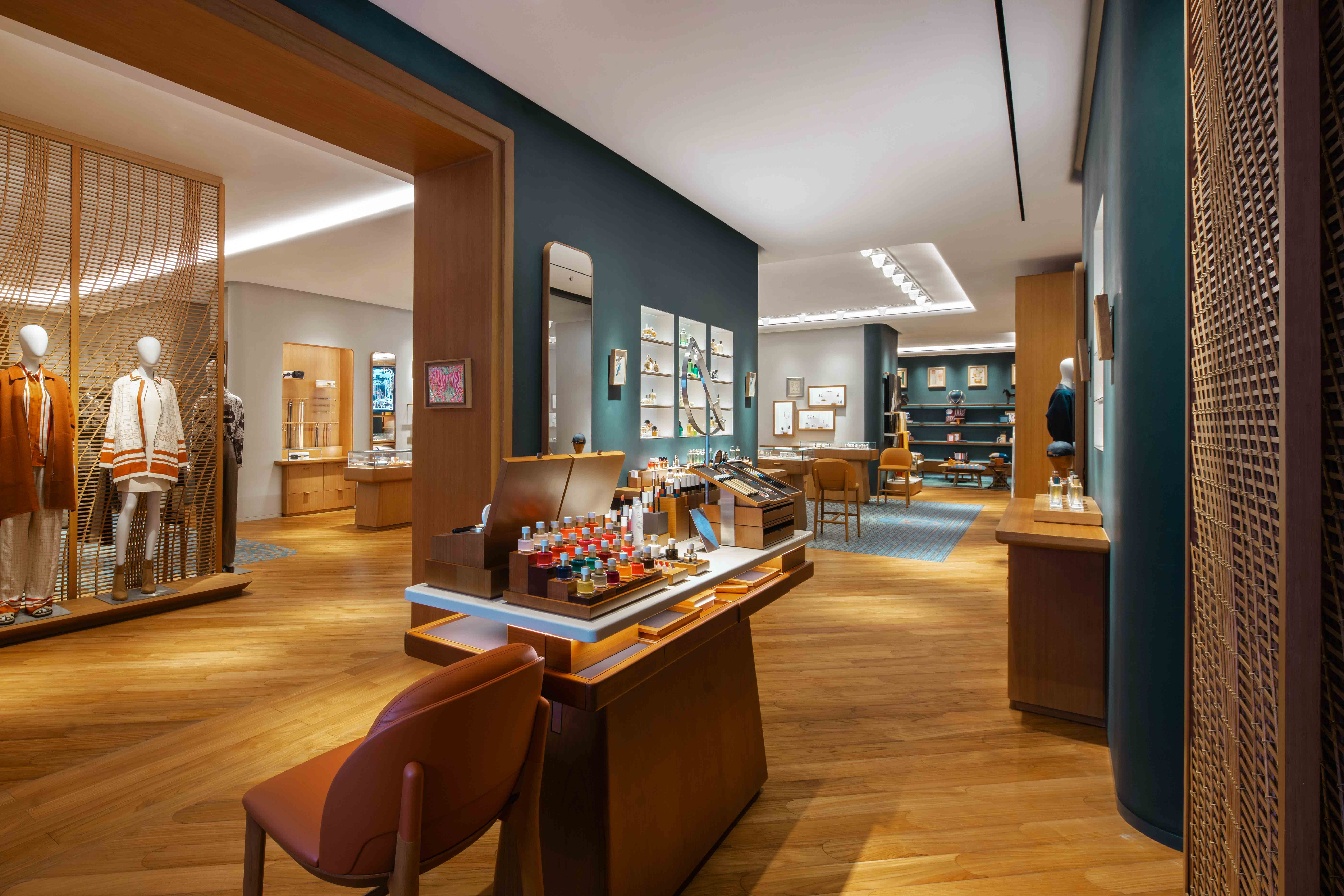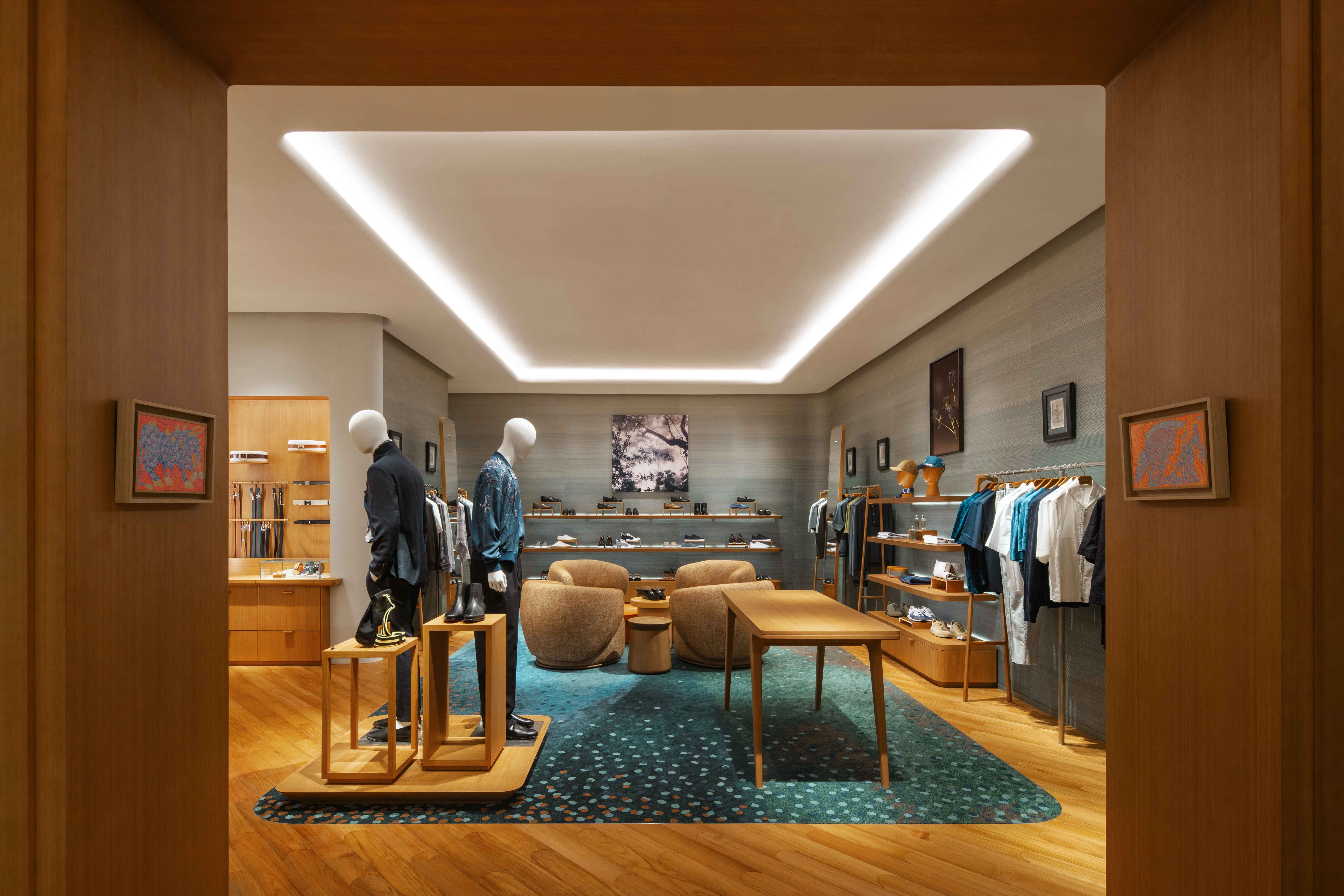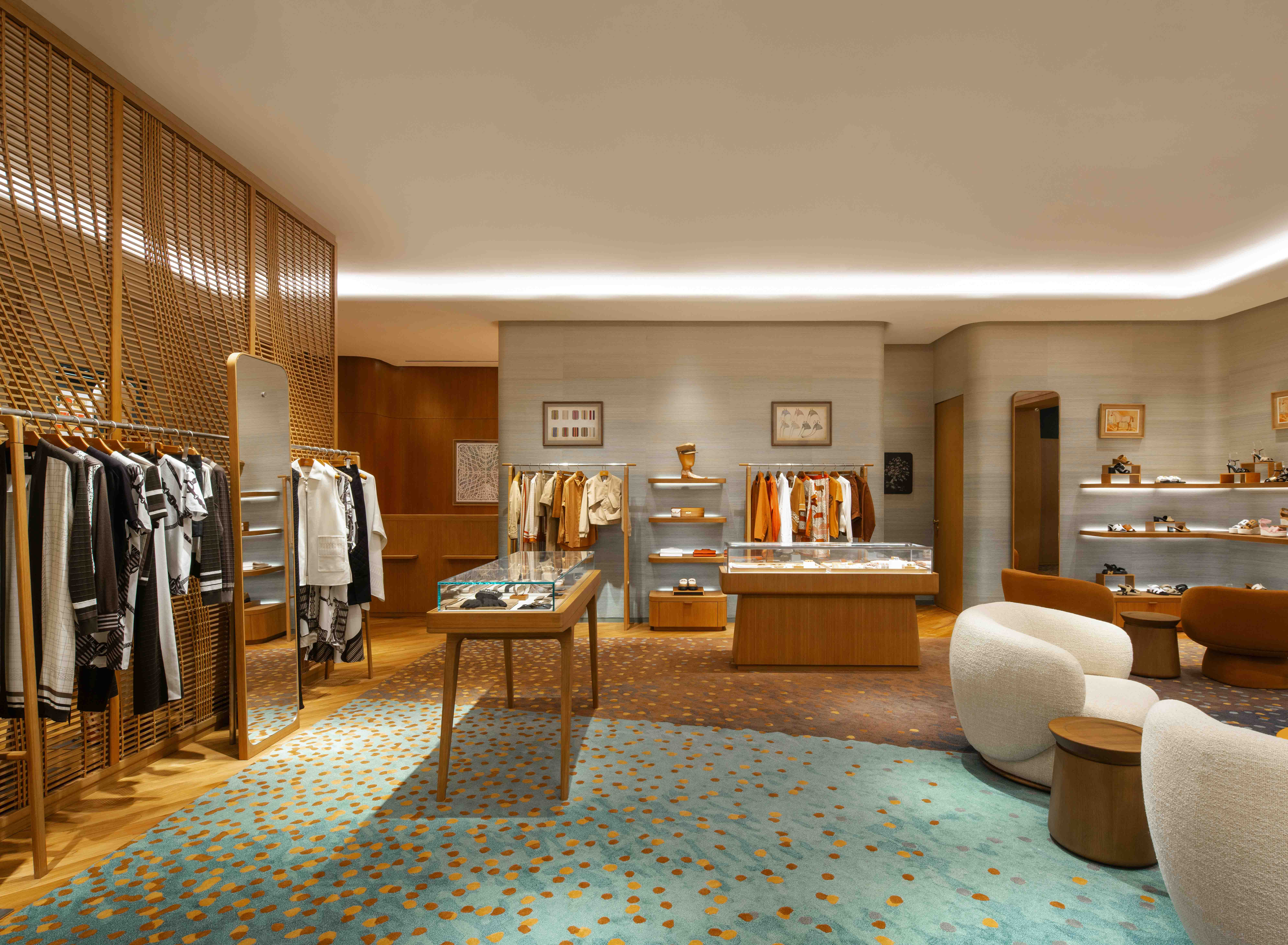When a grand European maison was opening a retail presence in Jakarta, we worked with the Design Architect RDAI and drew on its history of craft and materiality to create a space that exemplifies the best of its heritage with a local touch.
The brand wanted to establish a new flagship store in the Indonesian capital to enhance its presence in Southeast Asia, and commissioned the Oval Partnership as the Local Coordinating Architect (LCA). Our brief was to assist RDAI with creating a luxurious retail experience that reflected its global design ethos while integrating local cultural elements.

The Paris-based designer’s inspiration drew on Indonesia’s vibrant animal kingdom, particularly its diverse butterfly species, with a focus on the Papilio peranthus, a species native to Java, Sulawesi and Bali that’s notable for its striking combination of black and green, and the tails on its hindwings.
To help realise the vision, we collaborated with the brand abd RDAI through multiple workshops to refine designs and iterate the material development. We sourced and developed wall fabrics, and crafted wall panels for the watch and jewellery showcase, emphasising locally sourced finishes, textures and artisanal craft.

Throughout, materials are overwhelmingly local, facilitating sustainability. Walls are crafted from locally sourced rattan — drawing on the country’s centuries-long rattan craft traditions — with locally sourced timber flooring that reduces transportation emissions and support the region’s traditional artisans. The palette is rounded out by other carefully selected materials, including Thai carpets and bamboo — in both solid laminated and veneer — for furniture, ensuring both durability and alignment with the brand’s aesthetic standards.

RDAI and our team were also able to partner with suppliers to implement sustainable production practices, supporting broader environmental objectives, as well as incorporating an Indoor Air Quality (IAQ) control system to enhance occupant health and environmental well-being.
Throughout, the design team coordinated to overcome challenges in meeting the vision. The shopfront required a specific type of ceramic application, but the limited maturity of local ceramic production posed challenges. We undertook multiple factory visits and iterative refinements of the ceramic colours, shapes and weights, eventually achieving the striking final result. We also enhanced and expanded the role of the LCA in facilitating communication with local suppliers, deepening their understanding of the brand’s standards and design requirements.

The result speaks for itself, with an understated, craft-focused sense of luxury that is as tactile as it is visual. For us, the project serves as a model for balancing global luxury branding with local cultural and environmental considerations.

